
Gynecomastia is a condition in which a man’s chest develops a shape resembling that of a woman’s breast. It is typically caused by the development of mammary gland tissue beneath the areola.
There are two types of gynecomastia:
-
True Gynecomastia: Enlargement due to developed glandular tissue.
-
Pseudogynecomastia: Enlargement caused primarily by fat accumulation.
This guide will help you identify true gynecomastia through simple self-examination.

Gynecomastia literally means, that a man’s breasts have the same shape as a woman’s.
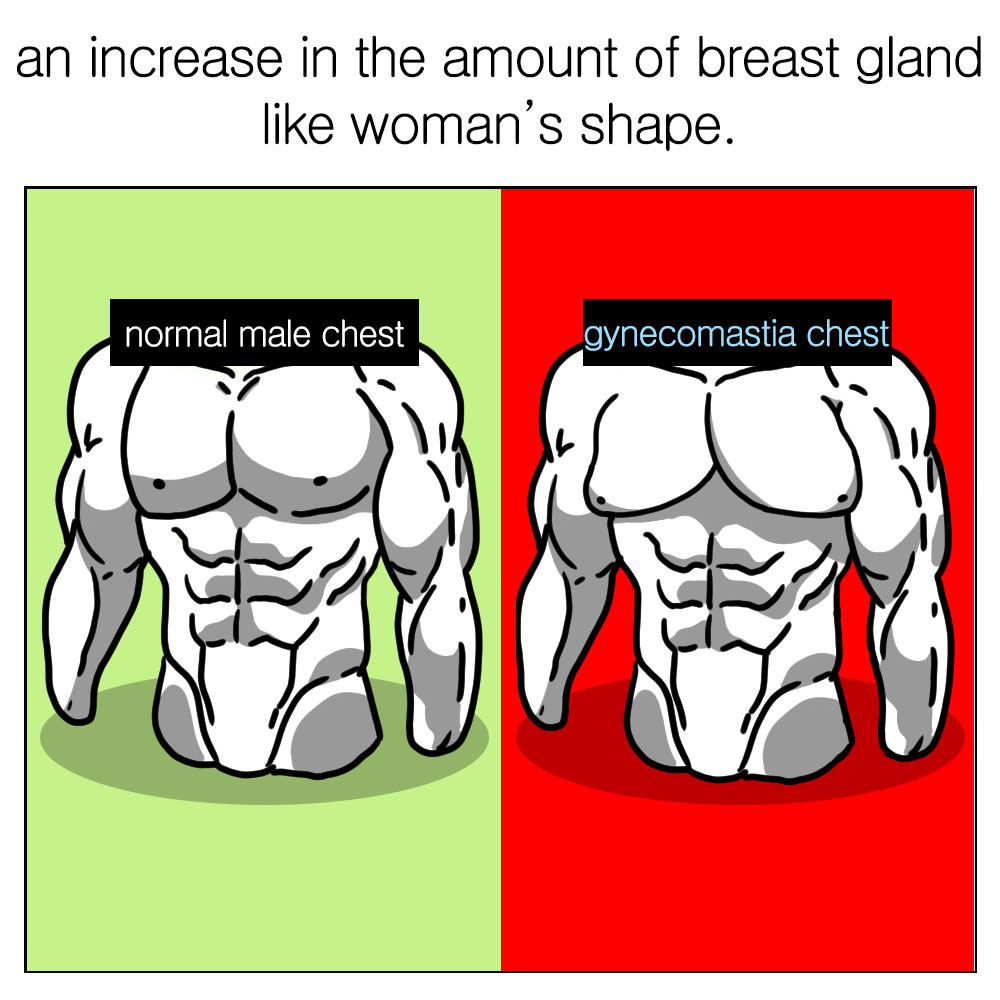
Male chest have a relatively flat appearance with skin, fats, and muscles.
Step 1: Understand the Normal Male Chest Structure
A typical male chest consists of:
-
Skin
-
Subcutaneous fat
-
Muscle tissue (mainly the pectoralis major)
-
Small traces of mammary gland (normally <1 inch, ~5 grams)
In most men, glandular tissue is minimal and not easily palpable with fingers.
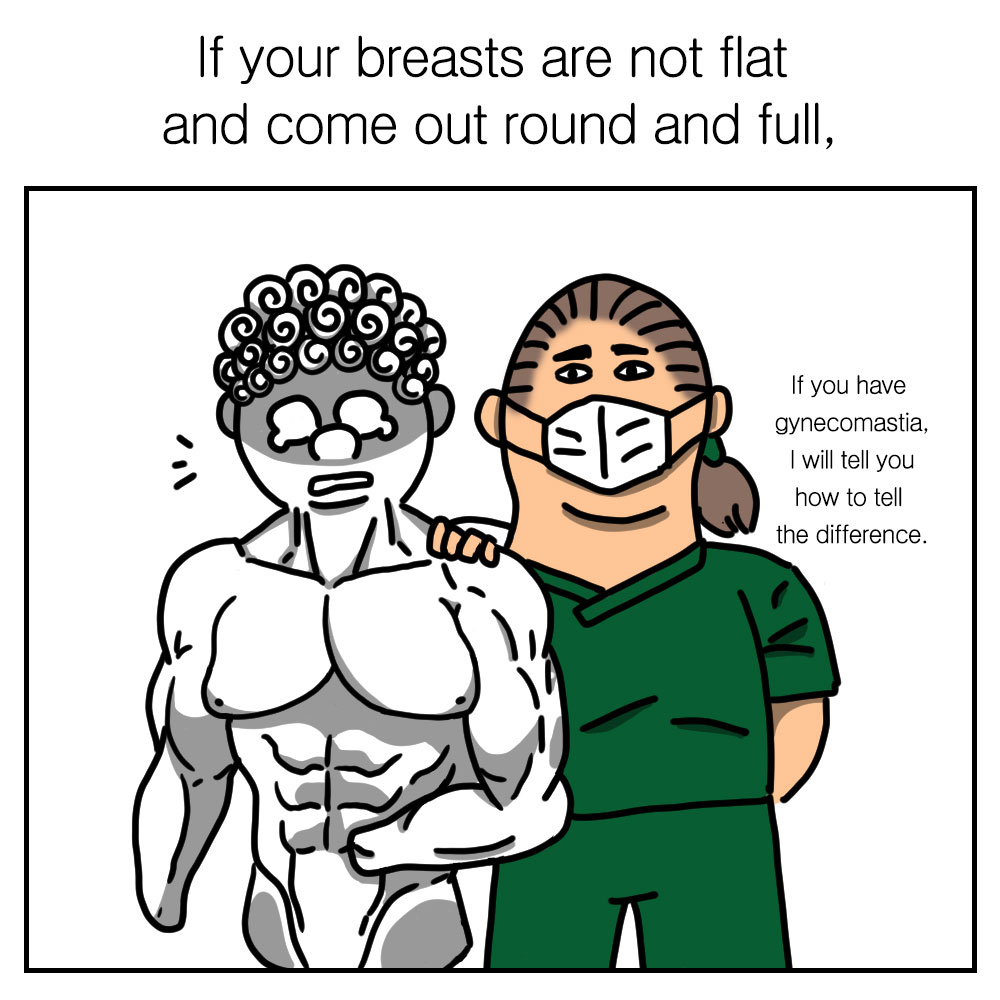
On the other hand, women’s breasts have a plump appearance due to the glandular tissue that has developed in that area.
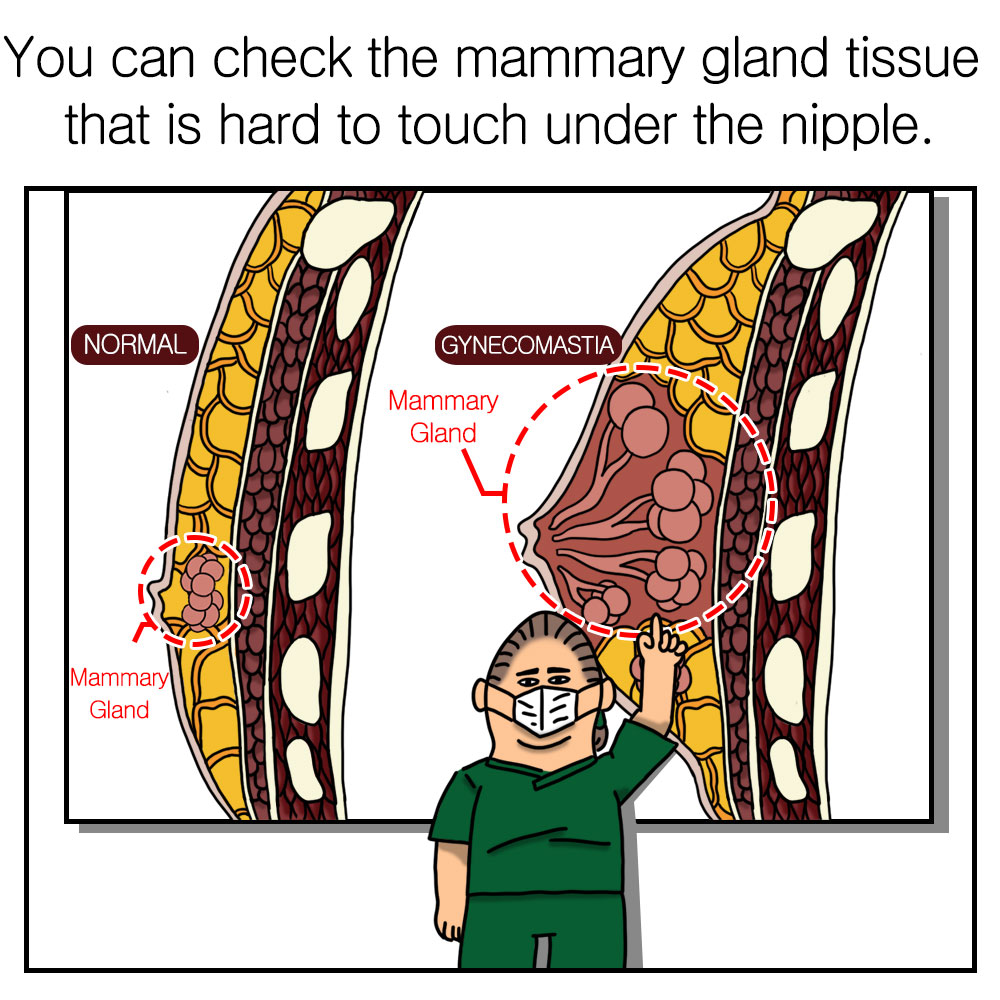
You can check whether there is a tightly held mammary gland tissue under the areola.
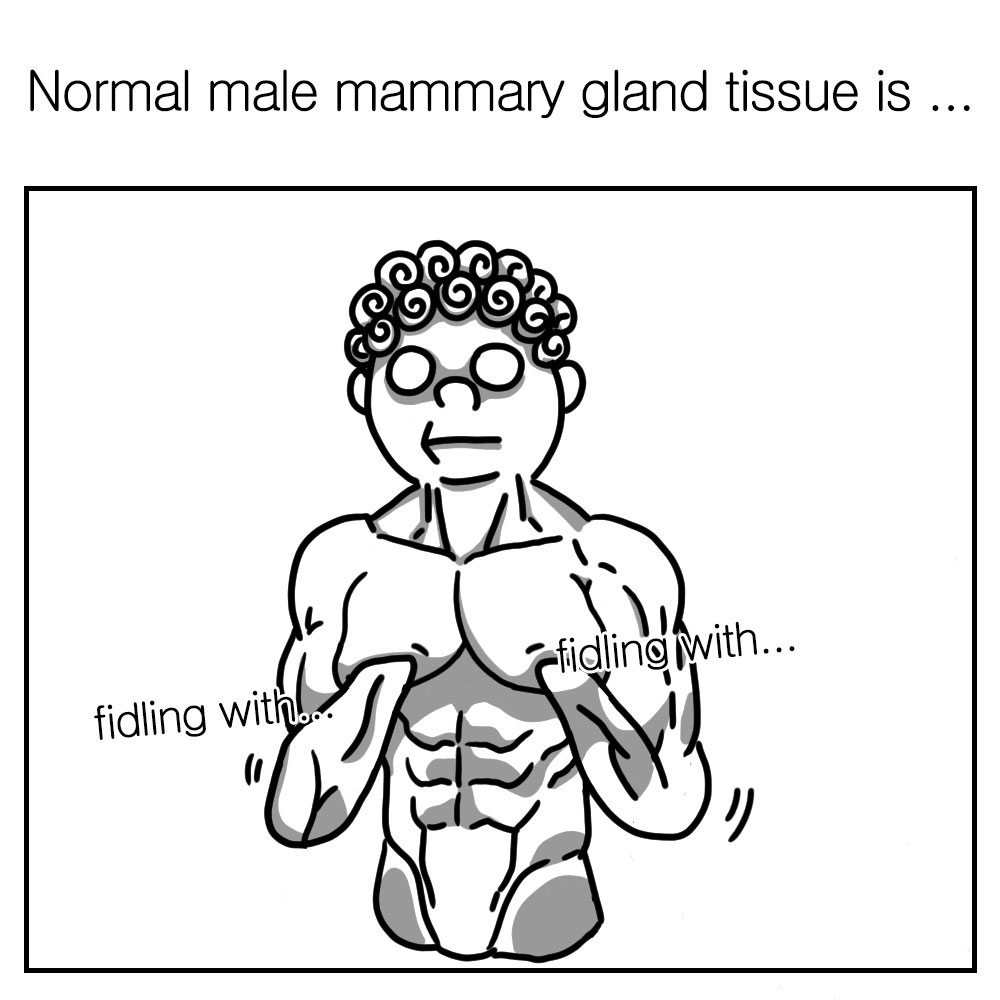
Of course, normal men also have traces of mammary glands.
However, since they are usually less than 1 inch in size and weigh around 5~10 grams,
they are difficult to hold with your fingers.
✋ Step 2: Check Under the Areola
Using your fingers, gently press around and under your nipple (areola) area.
-
If you feel a firm, rubbery disc or lump beneath the areola, this may indicate developed glandular tissue.
-
If this tissue is easily graspable and surrounded by softer fat, true gynecomastia is likely.
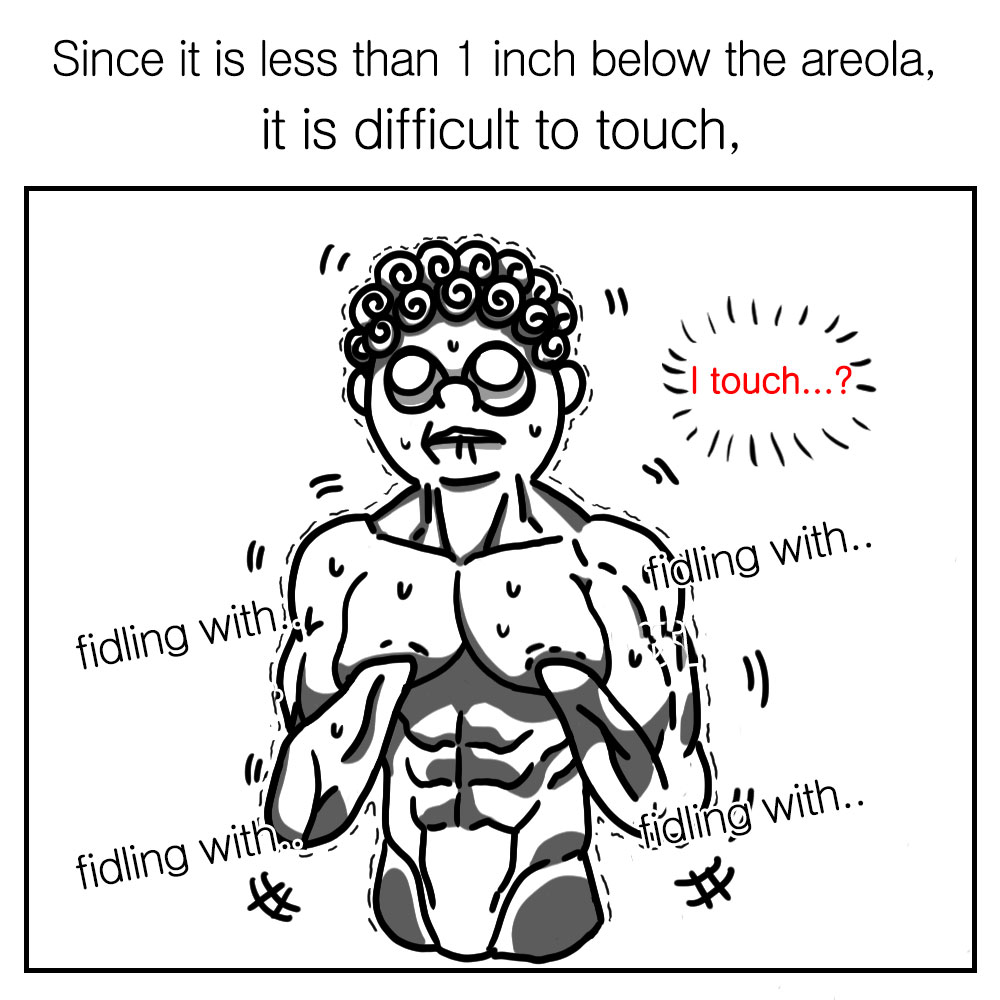
However, if the mammary gland is large enough to be palpable,
and softer fat is accumulated around it,
true gynecomastia can be strongly suspected.

Ultrasound or mammography can be used for an accurate diagnosis,
but an experienced gynecomastia specialist can easily diagnose gynecomastia by touching it lightly.
And, you need to get a detailed consultation from a specialist on how to treat it.
Step 3: Confirm with a Specialist
Although self-diagnosis is a helpful first step, an accurate diagnosis should be made by a medical professional using:
-
Physical examination
-
Ultrasound or mammography (if needed)
At Evita Clinic, our gynecomastia specialists can usually confirm the diagnosis with a brief touch and visual assessment.
✅ Next Step: Consultation & Treatment Plan
If you suspect you have gynecomastia, schedule a consultation.
We’ll explain your condition in detail and recommend personalized treatment options — surgical or non-surgical.
Most true gynecomastia cases require surgical removal of the gland for a permanent solution.
